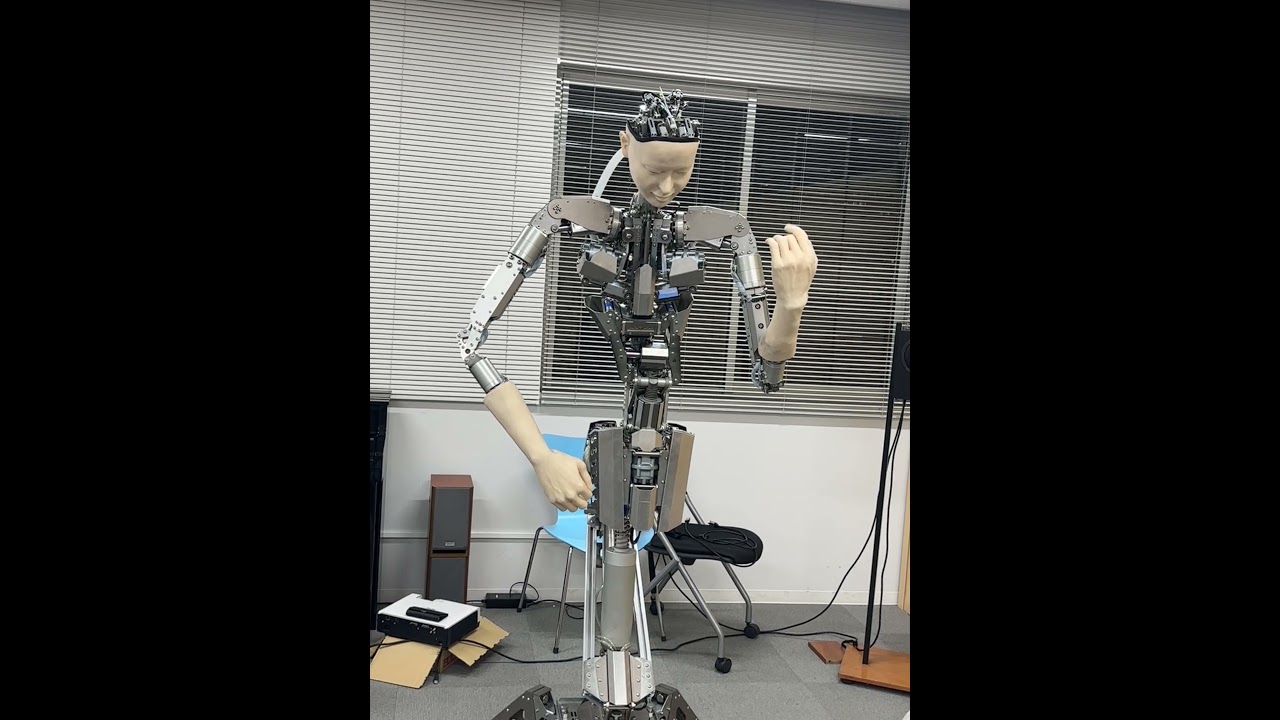
The Robotics Roundup is a weekly newspost going over some of the most exciting developments in robotics over the past week.
Merry Christmas!!!

In today’s edition we have:
- From Text to Motion: Grounding GPT-4 in a Humanoid Robot “Alter3”
- CyberRunner
- A robot is carving the Washington National Cathedral. Here’s how
- Reliable Robotics Achieves Uncrewed Flight
- This engineering team is defining how robots share our spaces
From Text to Motion: Grounding GPT-4 in a Humanoid Robot “Alter3”
Researchers from the University of Tokyo and Alternative Machine Inc. have developed Alter3, a humanoid robot capable of generating spontaneous motion using the Large Language Model (LLM) GPT-4. By integrating GPT-4 into Alter3, the robot is able to adopt various poses and generate sequences of actions without explicit programming for each body part. The researchers utilized verbal feedback to adjust poses, allowing the robot to store revised motion codes and improve its movements over time. Evaluations showed that motions generated by GPT-4 were perceived higher compared to random control motions, demonstrating the robot’s ability to generate a wide range of movements and accurately map linguistic representations onto its body. The integration of verbal and non-verbal communication enhances the potential for more nuanced and empathetic interactions with humans.
Alter3 showcases the potential of integrating LLMs in humanoid robots, enabling zero-shot learning and the ability to mimic various movements and express emotions. The researchers believe that this system can be applied to other humanoid androids with minor modifications, showcasing the agency gained through LLM integration.
CyberRunner
Researchers at ETH Zurich have developed an AI robot named CyberRunner that can learn to play the labyrinth marble game in record time. The robot applies model-based reinforcement learning and continuously improves its strategies and behaviors through observations and rewards. CyberRunner outperforms the fastest recorded time achieved by a human player by over 6%. The project is seen as an ideal testbed for research in real-world machine learning and AI, making cutting-edge AI research more accessible and affordable. The researchers plan to open-source the project and envision large-scale experiments where learning can happen in parallel on a global scale.
A robot is carving the Washington National Cathedral. Here’s how
A robot is aiding in the rebuilding effort of the Washington National Cathedral, which was damaged during the 2011 earthquake. The robot is helping recreate intricate stone pieces that were cracked or shattered. However, there is a struggle between the efficiency of the machine and the artistic touch of a human hand.
Reliable Robotics Achieves Uncrewed Flight
Reliable Robotics, a developer of autonomous aircraft systems, recently achieved an important milestone by completing its first uncrewed flight. The flight was conducted remotely by commercial pilot and engineer Danah Tommalieh using Reliable Robotics’ modified Cessna 208B Caravan. The operation lasted 12 minutes and involved taxiing, takeoff, and landing. Reliable Robotics has been preparing for this flight for many years, conducting extensive flight tests and simulations to ensure the aircraft’s performance in various operating conditions. The company believes that while automation can enhance safety, it is important to have human pilots involved in decision-making and communication with air traffic control. Reliable Robotics plans to conduct more significant tests in the future and continues to work closely with the FAA.
This engineering team is defining how robots share our spaces

Luis Sentis, an engineering professor at the University of Texas-Austin, is leading a team to study how self-moving robots interact with humans and how people respond to them. The research aims to inform the design and deployment of autonomous robots in human environments, with a focus on developing safety, behavior, and communication standards. The team is currently conducting experiments with Boston Dynamics’ Spot robots on the UT Austin campus, measuring participants’ stress levels and gathering feedback on their comfort and perceptions of robot use. The initial findings show that people generally view robots as a neutral good and are excited about their potential applications. The team plans to further explore how robots intersect with human stress and fears to foster a peaceful coexistence.



